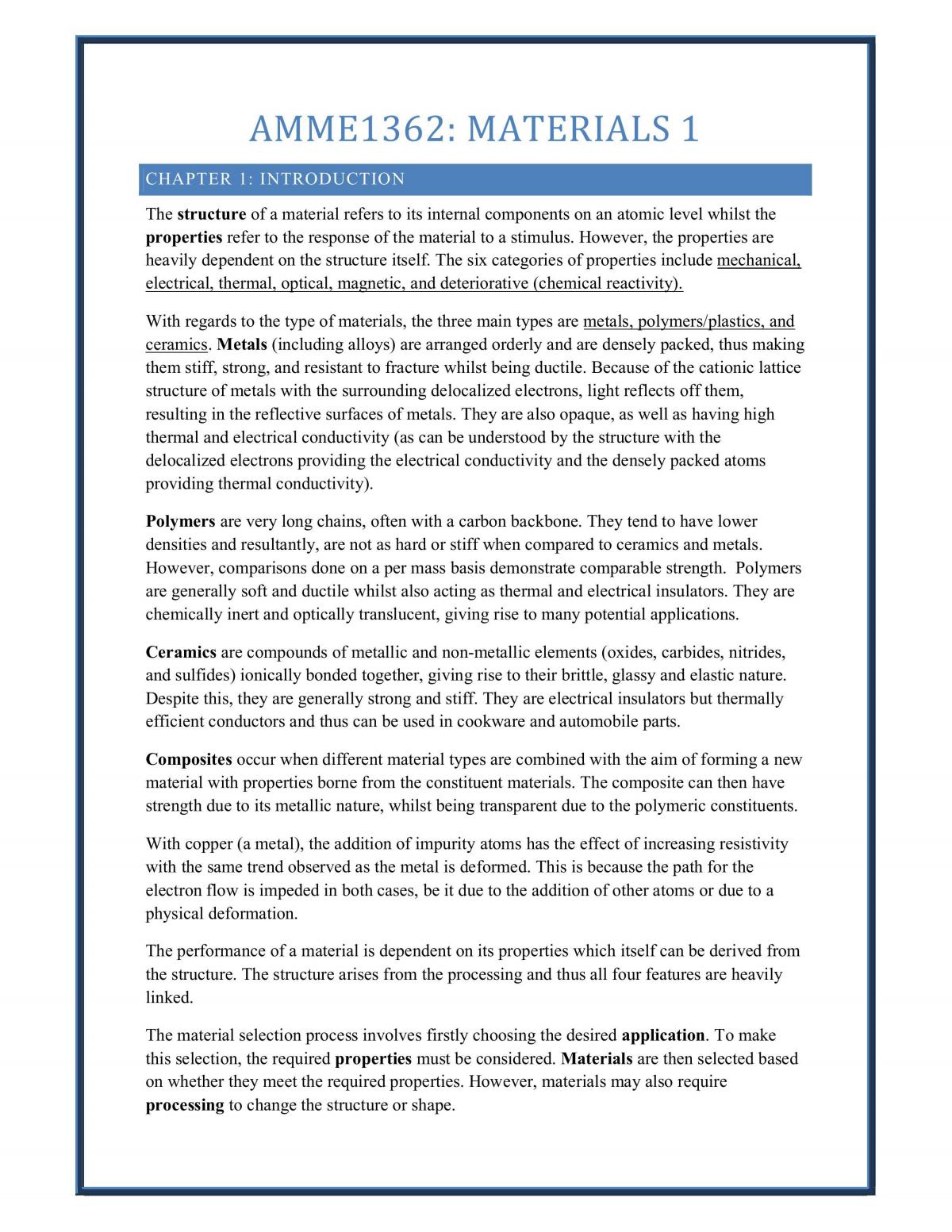Find
Search for over 200,000 study notes and past assignments!
Swap
Download study resources by swapping your own or buying Exchange Credits.
Study
Study from your library anywhere, anytime.
62 Pages • Complete Study Notes • Year Uploaded: 2021
The structure of a material refers to its internal components on an atomic level whilst the properties refer to the response of the material to a stimulus. However, the properties are heavily dependent on the structure itself. The six categories of properties include mechanical, electrical, thermal, optical, magnetic, and deteriorative (chemical reactivity). With regards to the type of materials, the three main types are metals, polymers/plastics, and ceramics. Metals (including alloys) are arranged orderly and are densely packed, thus making them stiff, strong, and resistant to fracture whilst being ductile. Because of the cationic lattice structure of metals with the surrounding delocalized electrons, light reflects off them, resulting in the reflective surfaces of metals. They are also opaque, as well as having high thermal and electrical conductivity (as can be understood by the structure with the delocalized electrons providing the electrical conductivity and the densely packed atoms providing thermal conductivity). Polymers are very long chains, often with a carbon backbone. They tend to have lower densities and resultantly, are not as hard or stiff when compared to ceramics and metals. However, comparisons done on a per mass basis demonstrate comparable strength. Polymers are generally soft and ductile whilst also acting as thermal and electrical insulators. They are chemically inert and optically translucent, giving rise to many potential applications.
This document is 50 Exchange Credits
More about this document:
|
|
This document has been hand checkedEvery document on Thinkswap has been carefully hand checked to make sure it's correctly described and categorised. No more browsing through piles of irrelevant study resources. |
|
|
This is a Complete Set of Study NotesComplete Study Notes typically cover at least half a semester’s content or several topics in greater depth. They are typically greater than 20 pages in length and go into more detail when covering topics. |
|
|
What are Exchange Credits?Exchange Credits represent the worth of each document on Thinkswap. In exchange for uploading documents you will receive Exchange Credits. These credits can then be used to download other documents for free. |
|
|
Satisfaction GuaranteeWe want you to be satisfied with your learning, that’s why all documents on Thinkswap are covered by our Satisfaction Guarantee. If a document is not of an acceptable quality or the document was incorrectly described or categorised, we will provide a full refund of Exchange Credits so that you can get another document. For more information please read Thinkswap's Satisfaction Guarantee. |

Studying with Academic Integrity
Studying from past student work is an amazing way to learn and research, however you must always act with academic integrity.
This document is the prior work of another student. Thinkswap has partnered with Turnitin to ensure students cannot copy directly from our resources. Understand how to responsibly use this work by visiting ‘Using Thinkswap resources correctly’.
Browse USYD Subjects




